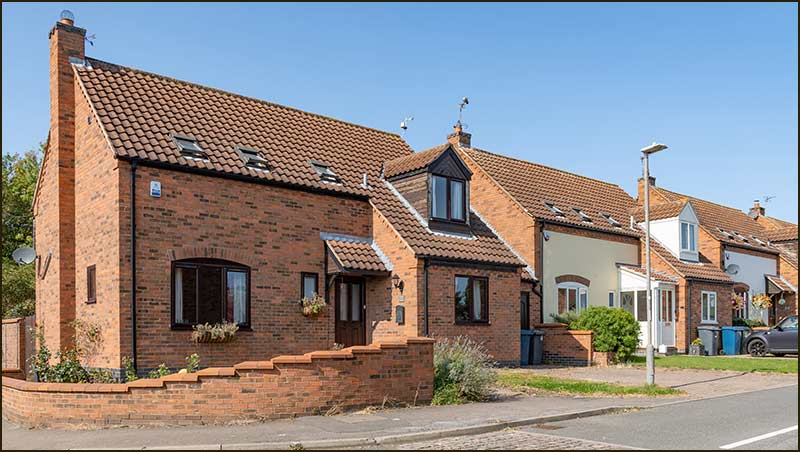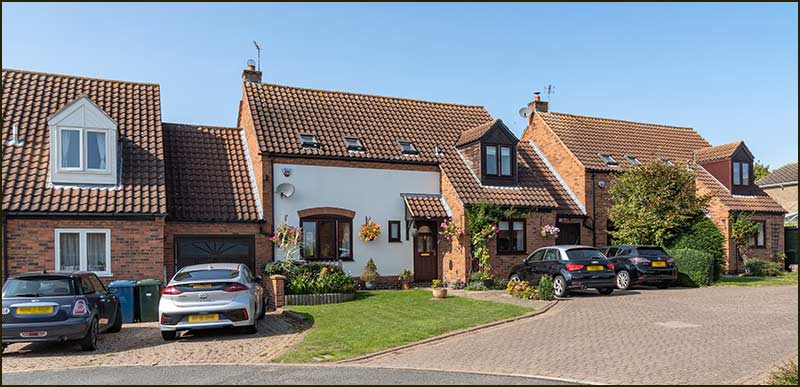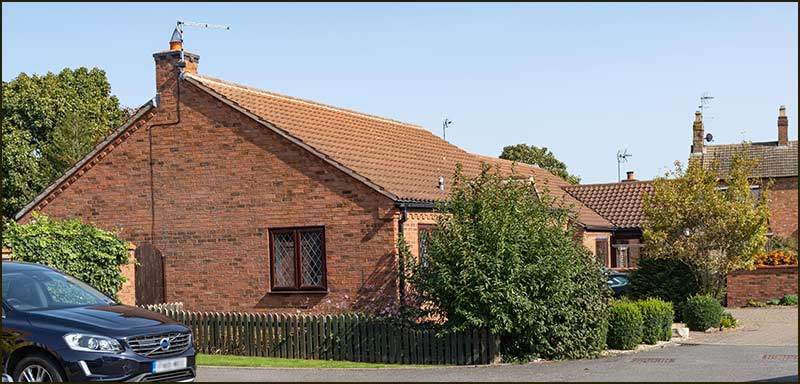Cropwell Bishop Streets: — Old Lenton Close (3-3-21)

The homes on Old Lenton Close have a unique style. The name of the street is unusual too; it is not derived from a person but from the house next door.
In fact, the naming of Old Lenton Close cannot be understood without some knowledge of the history of that house next door: Lenton House. It goes back a long way, but evidence of its past is all around.
.jpg)
Lenton House is at the far end of the Close.
I suppose you could think about the story of Lenton House as one of growth and decline. That, at least, might be how a farmer would look at it. Its residents would see it as one of continual growth, right up to the present day.
A hundred years ago, on a journey along Nottingham Road and then out of the village (in either direction), you would have passed by six or more farmhouses – most of them part of fully working farms.
Before the days of motorised transport and tractors it made sense to have a farmhouse and buildings close to the village centre where transport and labourers were based. Lenton House was part of that farming community.
There is anecdotal evidence that the original farmhouse was built around 1790 but finding hard facts to support this view has proved impossible. Nevertheless, I decided to search Census data and old maps to try and disprove the idea – or not.
The map drawn up for the Enclosure Act of 1804 shows how the land in the parish was allocated to its landowners. It also appears to show the buildings in the village at that time.
If Lenton House was supposedly built 14 years before 1804, it should be on the map – but it isn't. So, does this mean, I wonder, that the 1790 date is wrong. Not necessarily.
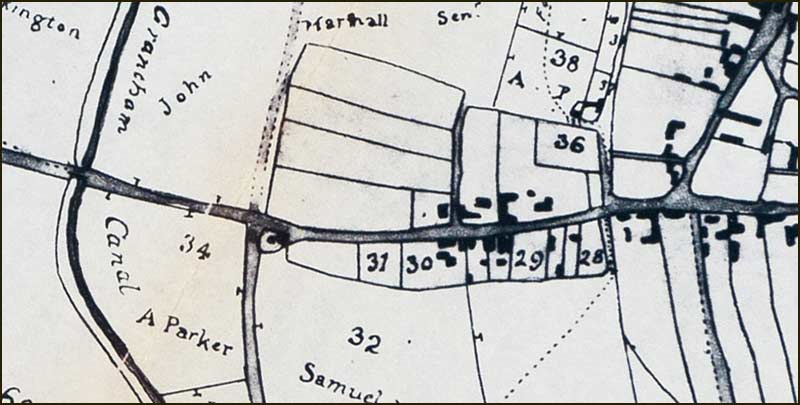
If you look at the small print on any map, whether it be an OS map, an ancient one, or even Google Earth, you will almost certainly find that it is based on an older version that has been updated several times over.
The buildings on the 1804 Enclosure map may well have been based on surveys conducted some time before 1790, which could explain why Lenton House does not appear on it.
What we can be certain of, is that Lenton House was built in two phases – decades apart. There is ample evidence to support this.
The rear-half and front-half of the house differ in brickwork, construction, floor levels and ceiling height: they also have their own staircase. The rear-half does appear to be older and it is where the kitchen is located.
Any new house has to have a kitchen and only the rear-half of Lenton House has a kitchen (an old one) so it must have been part of the original farmhouse.
Finding evidence for the age of the original farmhouse proved difficult, but finding the date of its enlargement and the building of many new farm buildings was easy: the builder put it on an outside wall in numbers 2m high using coloured bricks.
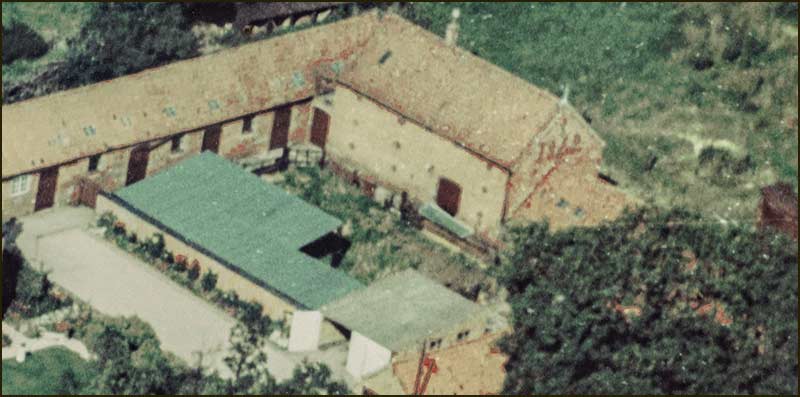
This was when John Smith took over the farm and the house. He is thought to have bought them in 1841 but he did not move in until 1844, together with his wife, Ann, and two children. Up until that time they were living at The Yews farmhouse further down Nottingham Road (on the corner of Barratt Close).
Although there is no date plaque on the newer, front-half of the house, there is every reason to believe that it was built at the same time as the outbuildings. John Smith was a wealthy farmer and it is hard to imagine him moving from The Yews farmhouse into a smaller one when he clearly had the money to build a better one.
A map from the 1890s shows the house with its newer front half.

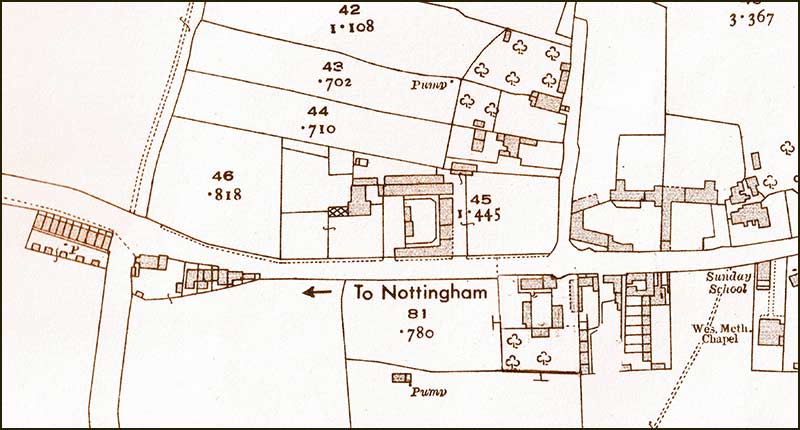
John Smith was still living there but he was now an old man: it is not likely that he would have embarked on major building work at this stage of his life.
The front of the house today looks the same (more or less) as it did in 1842 – that is what all the available evidence suggests.

The outbuildings have not fared so well. When Hoe View Road (newer end) was joined up to Nottingham Road in the 1970s, much of the farmyard had to be trimmed back.
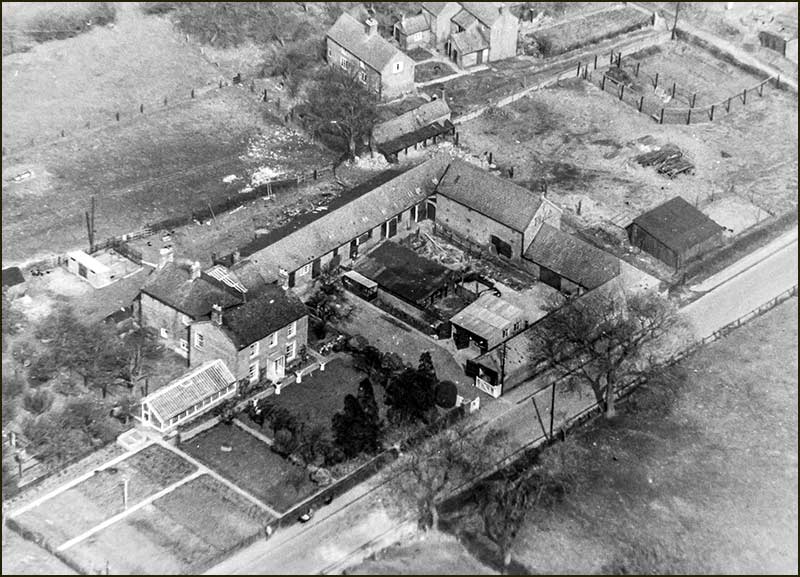
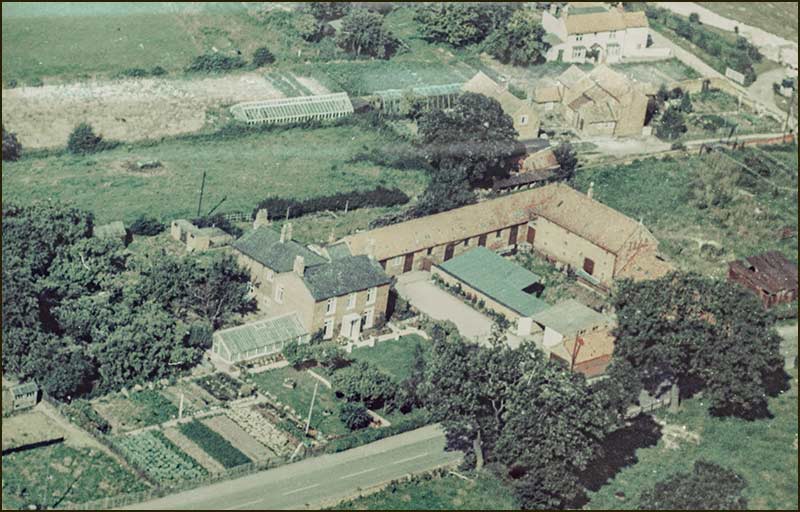


Lenton House timeline
Over the past two hundred years, several families have lived in the farmhouse and run the farm. Two farming families have been responsible for over half of those years: the Smiths and the Barlows.
Nonetheless, all the occupants have played a part in maintaining and enhancing the house and its surroundings.
Here is a summary of dates and characters in the story:
1790
- It seems quite likely that the oldest part of the house was built around this time, but there is a lack of supporting evidence. The occupants are unknown.
However, there is ample evidence that the house was built in two phases, decades apart, and that the second phase began in 1841. 1841
- John and Ann Smith took over the farm and farmhouse in 1841. They had been living at The Yews farmhouse since 1824.
John Smith, who was 45, invested a lot of time and money in the farm and house even before moving in. The “1842” on the end of a barn confirms the year it was built, and their still exists a water pump with the year, 1842, on it.
The earlier farmhouse was end-on to the road but the extension he added, faces the road.
This front-half has higher ceilings and other features that differ from the back-half.
John Smith was the biggest landowner in Cropwell Bishop at the time and the farm became known as ‘Smith's Farm’.
1881
- John Smith died in 1881. His wife, Ann, had already died 13 years earlier.
Their daughter, Elizabeth, moved into the house with her husband, William Briggs, and for a while they lived at the farm. However, William was not a farmer, but a grocer who had lived and worked in Old Lenton in Nottingham – and he was 55 years old.
A short time later, his own daughter, Elizabeth Ann (John and Ann Smith's granddaughter), moved in with her husband, 39-year-old George Cheetham.
They had been living in the Old Lenton area of Nottingham where, most importantly, George had been a farmer. 1890s
- Fifty years of ownership by the Smith family, came to an end when the farm was bought by 45-year-old farmer, Henry Alwyne Tinsley. This happened sometime in the 1890s and is confirmed by the 1891 Census. He moved in with his wife and ever-growing family.
Not only was he a farmer, but also a representative of the Home Brewery Company. 1926
- In 1926 Henry Tinsley was 60-years-old and he sold the farm to 23-year-old farmer, Arthur William Barlow. Arthur was the son of Thomas Barnet Barlow who was a major Cropwell Bishop landowner.
In 1928, young Arthur married Gladys May Salvin and their first child, David Barlow, was born in 1930. Son John and daughter Edith May followed in the next few years. 1974
- In 1974, Arthur and Gladys Barlow had lived at Lenton House for nearly 50 years, and had successfully coped with several years of disruption while their farm was trimmed to allow a new entrance to Hoe View Road to be created.
But then, at the age of 71, Arthur died following a short illness.
His wife, Gladys, went on to have a bungalow built near the centre of the village – opposite the Wheatsheaf Pub. She lived there until her death, at the age of 96, in the year 2000. 1975
- Lenton House was taken over by Arthur and Glady’s daughter and her husband, Edith and Denis Smith.
Denis was a builder, and spent time modernising the house.
Edith and Denis then let the house to Peter and Margaret Cole for a number of years. 1988
- Lenton House was bought by Simon and Jane Jackson.
2006
- In 2006, the house was bought by present owners, Ken and Theresa Davis who, over the years, have continued to sympathetically modernise the house and outbuildings.
An ancient well has been tastefully restored and brought into working order. The water level is very low and has, no doubt, been that way since gypsum mining disrupted natural water supplies 80 years ago.
Nevertheless, with the help of electricity, water can be pumped through the original 1842 hand pump.

Family trees

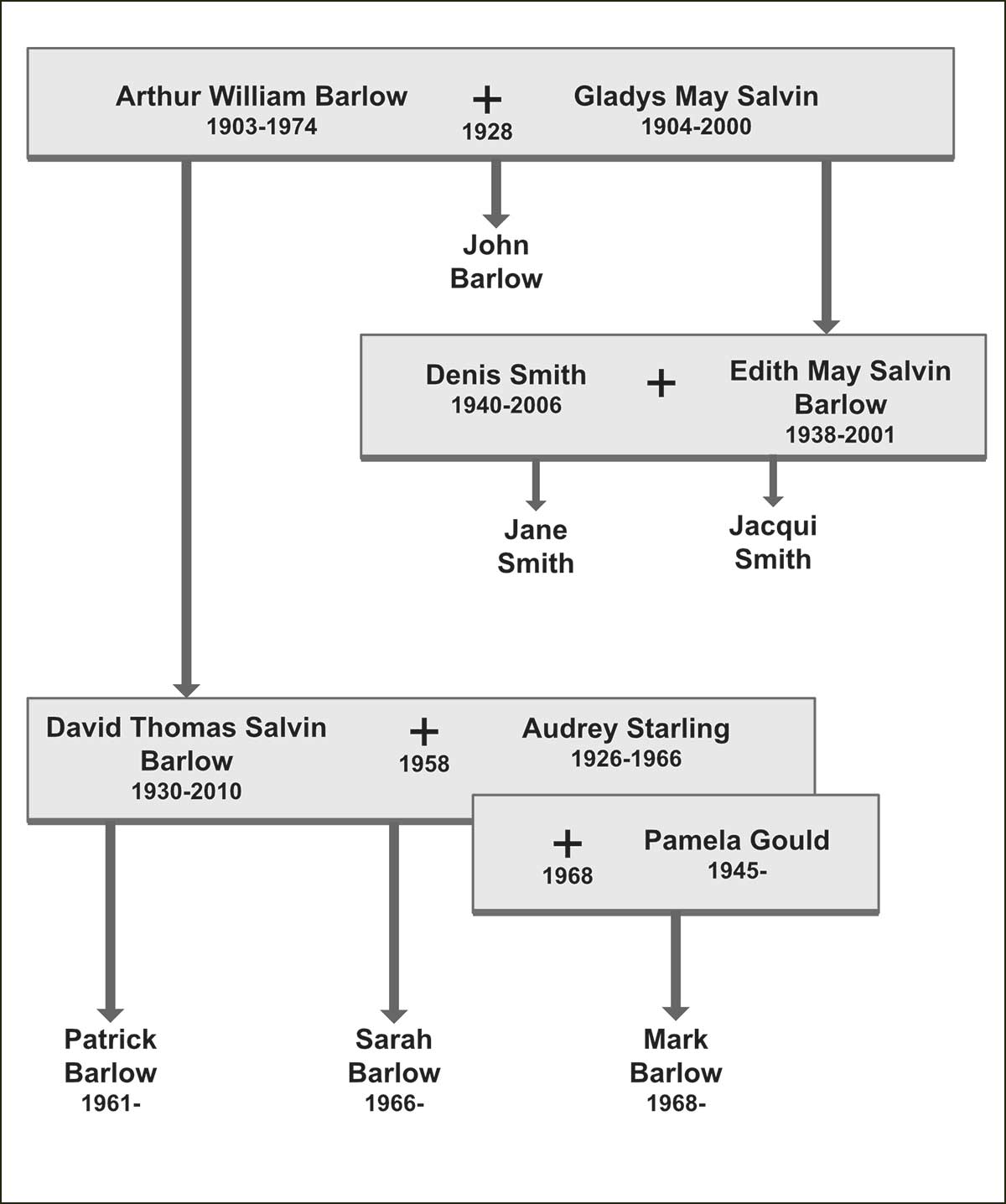

Old Lenton Close: its building and its name
This story is about Old Lenton Close and yet, so far, I haven’t explained where the name comes from: time to make amends.
The naming of Old Lenton Close follows from the name of Lenton House so we must first find out where that name, "Lenton House", comes from.
For, at least, the first 100 years of its existence, the house was not called Lenton House. When it was taken over by John Smith in the 1840s, it became known as Smith's Farm, but I doubt it had a name plaque on its gate.
In those days, the main roads through the village were all referred to as 'Main Street'. The few other streets that existed, acquired their name through popular usage, most often from the name of someone living there.
Examples include Billings Lane, Thraves Lane and Starbucks Yard. If those people moved from the street or died, the name would eventually change. Names were not cast in stone.
The same was true of houses. Examples include rows of houses like Parkers Row and Etheldene Cottages. Similarly, individual houses like School House and Shelton Farm.
So, once John Smith built his farm, it wouldn't have been long before it became known as Smith's Farm. When Henry Tinsley took over in the 1890s, it would have been known as Tinsley's Farm.
When Arthur Barlow took over in 1926 you might assume that it became known as Barlow's Farm – and maybe it did, but there is good reason for it not to have been.
Arthur's father, Thomas Barnet Barlow, was also a farmer in Cropwell Bishop and having two farms being called Barlow's Farm needed to be avoided.
Whatever the timing, we know for certain that by 1939 it was called Lenton House because it is listed as such in the 1939 National Register. But you may wonder, where did this name come from.
I have not discovered a document that provides the answer, but there are clues in the family's history.
Whilst Arthur was born in Cropwell Bishop, Gladys was born on Albert Grove, Nottingham – or, to be more precise, in Lenton. She also spent her childhood there.
I believe that this is why Lenton House was so named.
This is all very well, but now we need to understand how Old Lenton Close got its name. To do that, we need to delve into the history of the land that the street occupies.
By the 1980s, Denis and Edith Smith owned Lenton House and all the land between it and the Memorial Hall Field (or, at least, up to the bridlepath beside it). In 1988 they sold Lenton House but retained much of the garden on its left.
They, no doubt, recognised the potential of the remaining land for housing but knew that before this could happen, they would have to deal with a building at the western end of the plot: a large commercial Garage with a DIY wood shop at the rear. Fortunately, they owned both.
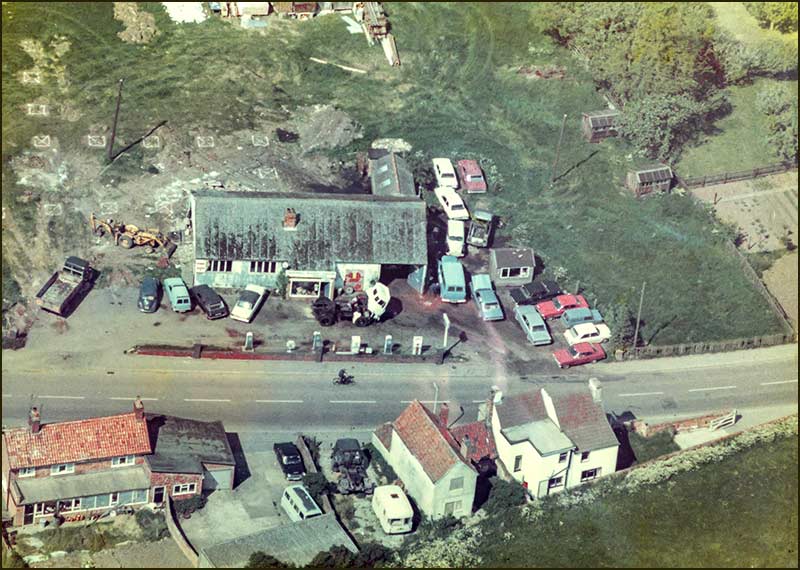
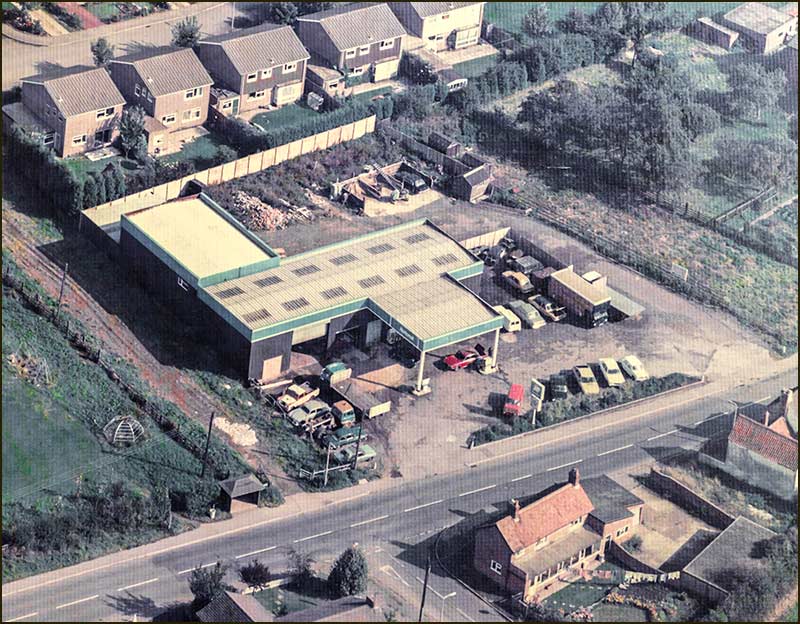
A Garage had stood on the site for over 50 years. Photographs taken after 1929 show a smart efficient looking garage and filling station. The first filling station in the UK appeared in 1920 so to have one like this in Cropwell Bishop just 10 or so years later was quite an achievement.
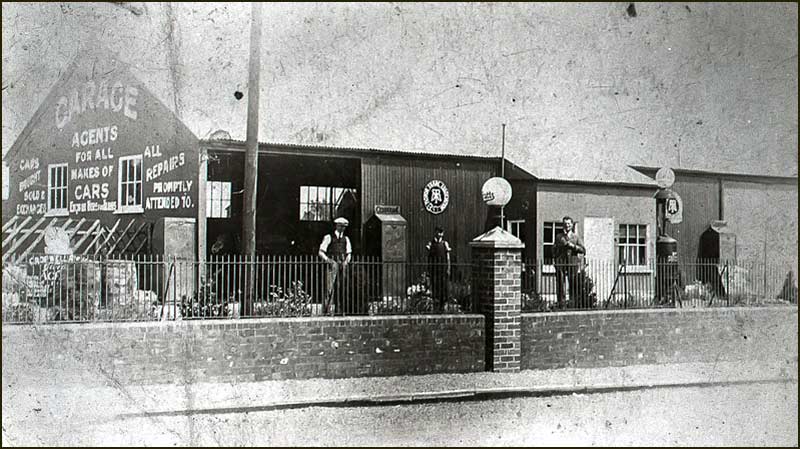

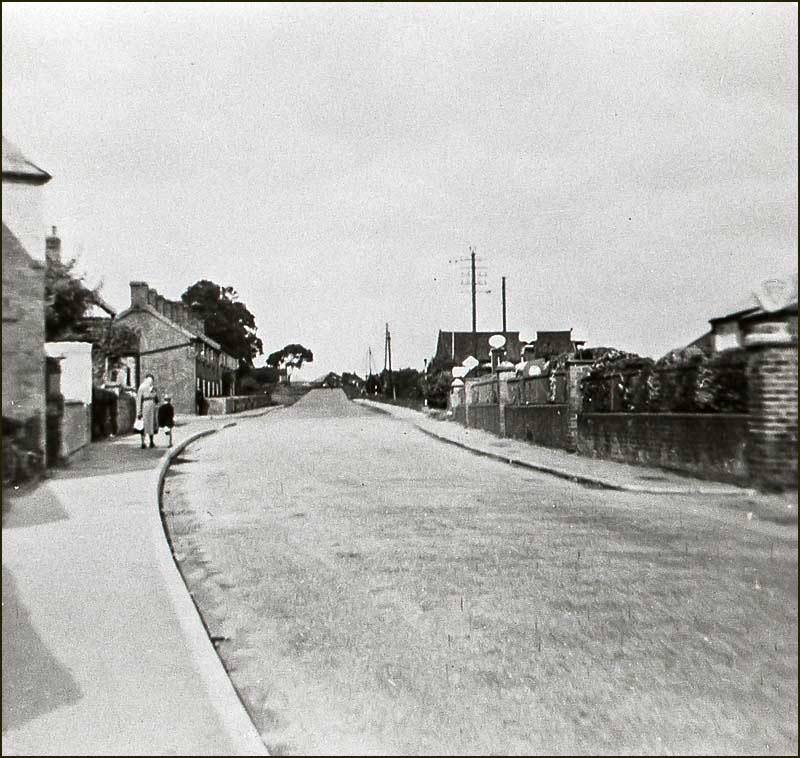
This Garage was referred to as Tinsley's Garage. It was Henry Tinsley who owned Lenton House before Arthur Barlow, but Henry died in 1934. It seems to me, more likely that it was Henry's son, Harold, who ran the Garage.
He was married to Violet Barlow, sister of Arthur Barlow – an example of the many links between village families in those days, which was typical of most old English villages before the First World War.
In 1939, the Garage was being run by Francis Kent who described himself as a "motorcycle and general engineer". His wife, Edith, was a "shopkeeper" and 18-year-old, Robert, was a "motor mechanic". And according to the 1939 Register, they were living at the Garage.

Compare this photo with the 'Garage in the 1960s' photo where you can identify the home as being the left-hand end of the Garage itself.
On the left is the shop, on the right a small bungalow, and off to the right, is the Garage which was probably the same as it was during Henry Tinsley's tenure.
The Garage and filling station were still fully operational in the 1970s but once the large supermarkets began selling discounted fuel, the petrol pumps disappeared. The Garage mechanics remained until the 1980s when the everything disappeared to make way for Old Lenton Close.
The homes on Old Lenton Close were all built at the same time but four of them face onto Nottingham Road. For this reason, they are classed as being on Nottingham Road and their house numbers reflect this. However, for this Street Story, I decided that it was only logical to consider all the houses as being part of Old Lenton Close. Let's now consider the choice of name.
They may have thought to call it Lenton Close but then rejected the idea because it was so similar to Lenton House next door. Assuming there was a desire to maintain the connection with Gladys Barlow's childhood district of Lenton, Parish Councillors may have been inspired by some earlier occupants of Lenton House.
John and Ann Smith had been the original long-term occupants of the house and in the 1890s the families of both of their daughters successively lived there. Both of these families had been living and working in Nottingham – in Old Lenton.
The street name, Old Lenton Close, links nicely with the Smith and Barlow families. Maybe this was how it came to be chosen.
Tony Jarrow
Note:
Thanks to Anne Terzza, Pam Barlow, Ken & Theresa Davis, Ricky Snodgrass, Debbie Brookes, Lesley Shuttlewood and Tony Carter for their help with this article.

More photos of Lenton House
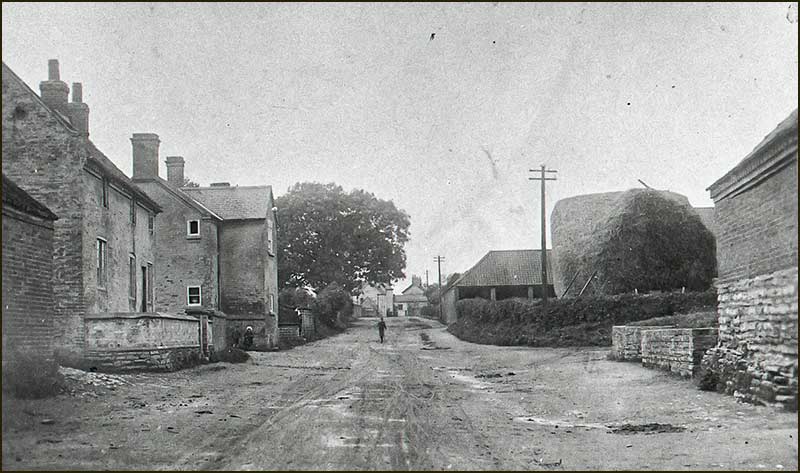
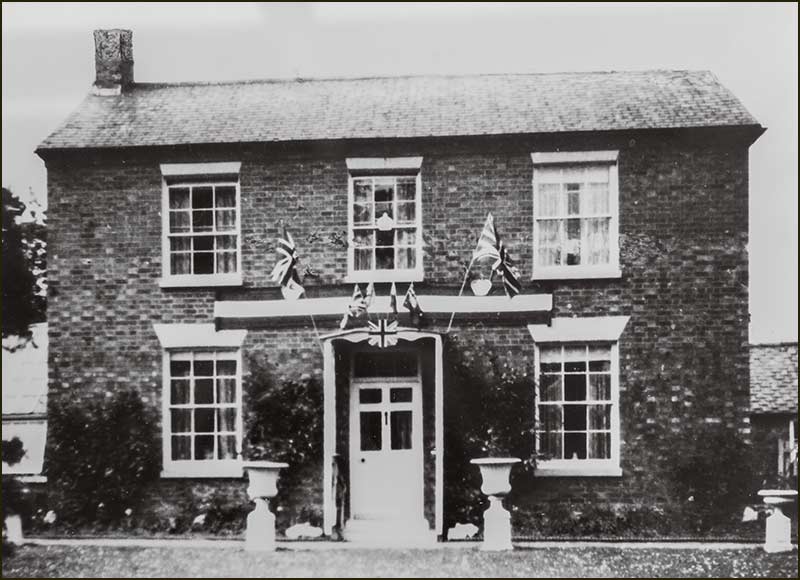
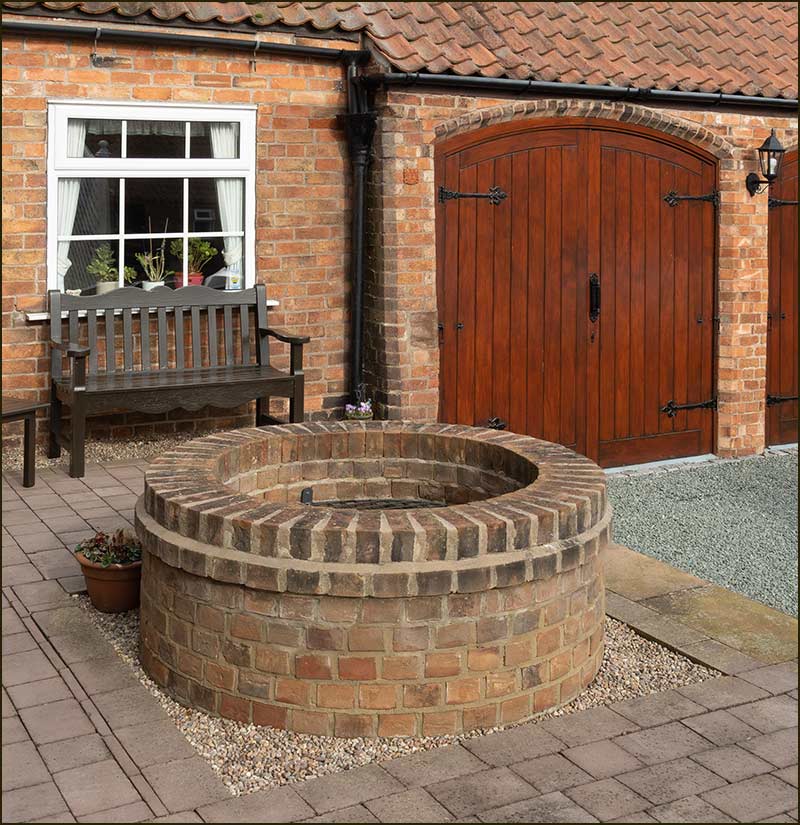
The well hole is deep but the water at the bottom is shallow. Ever since deep gypsum mining disrupted water supplies, the well is no longer able to supply a regular water supply to the house – but at least Severn Trent Water can.
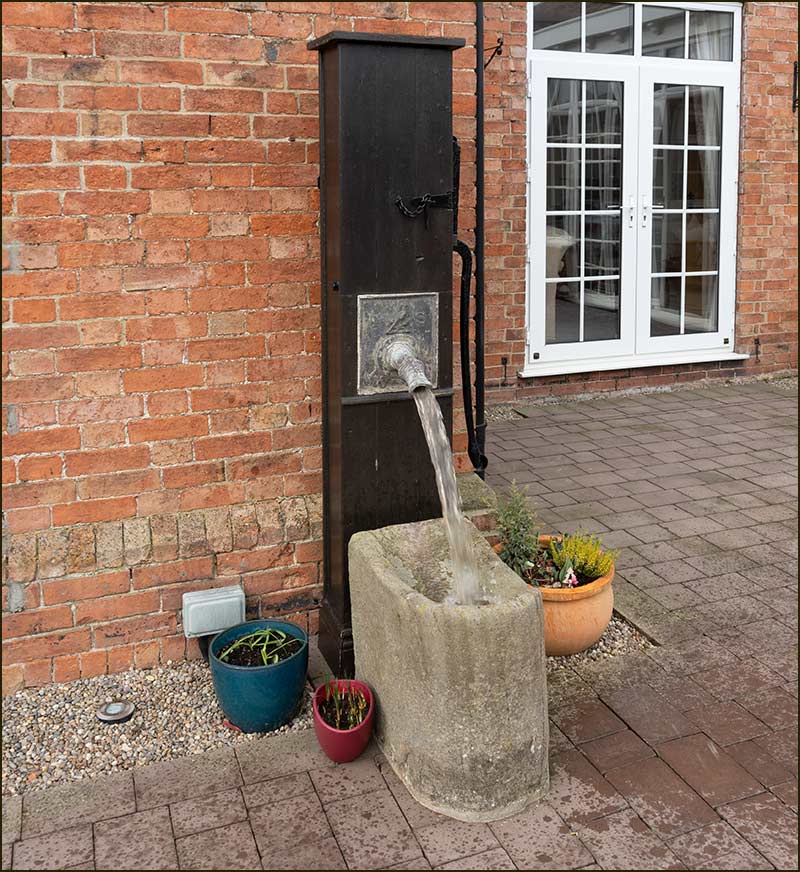

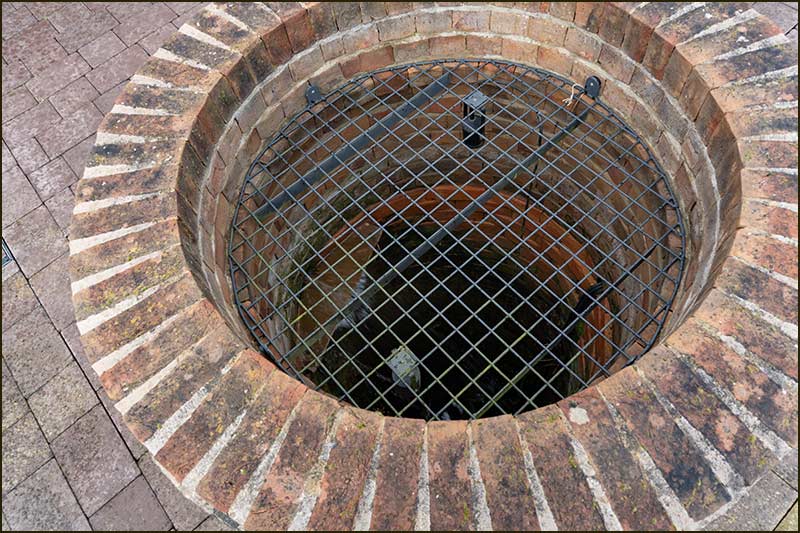

Old Lenton Close in 2020
